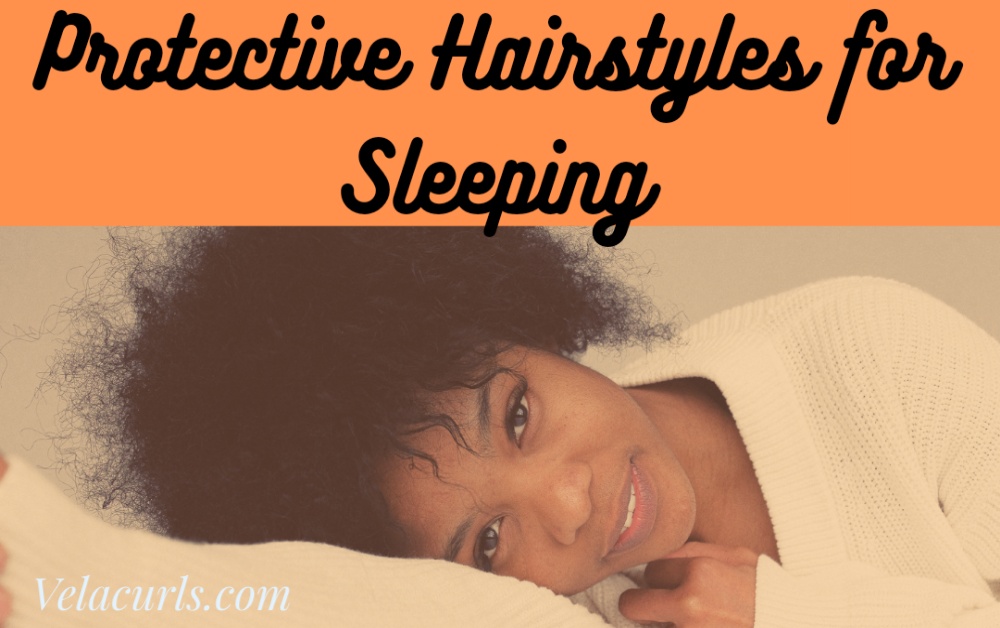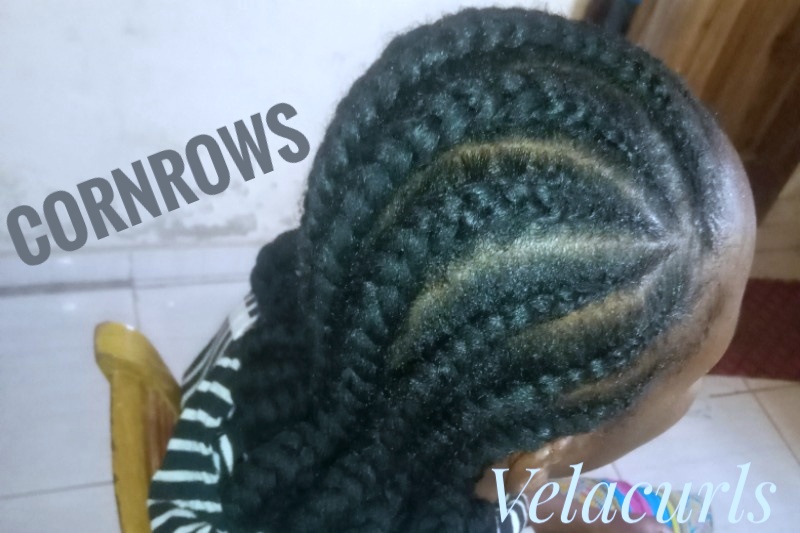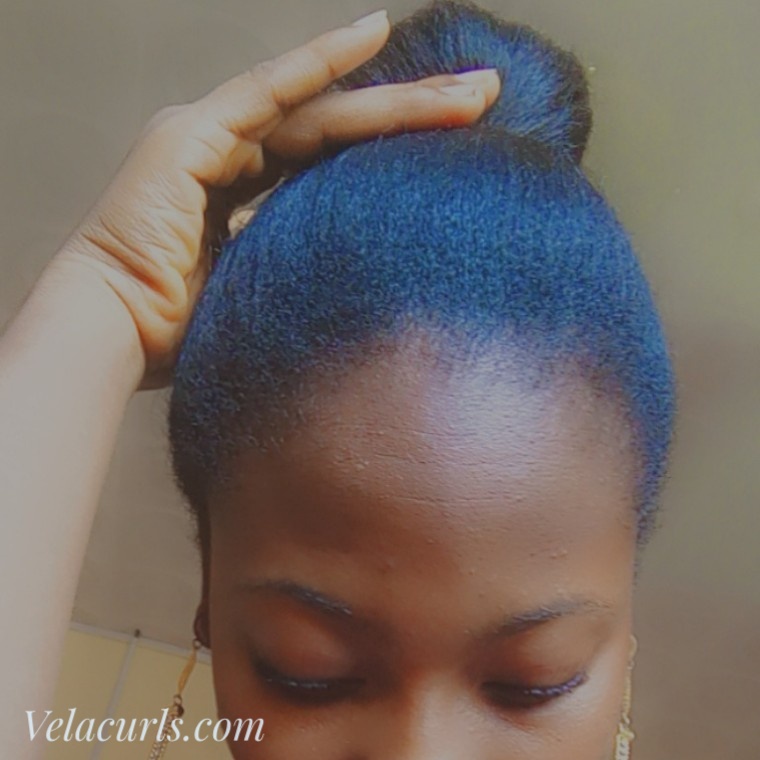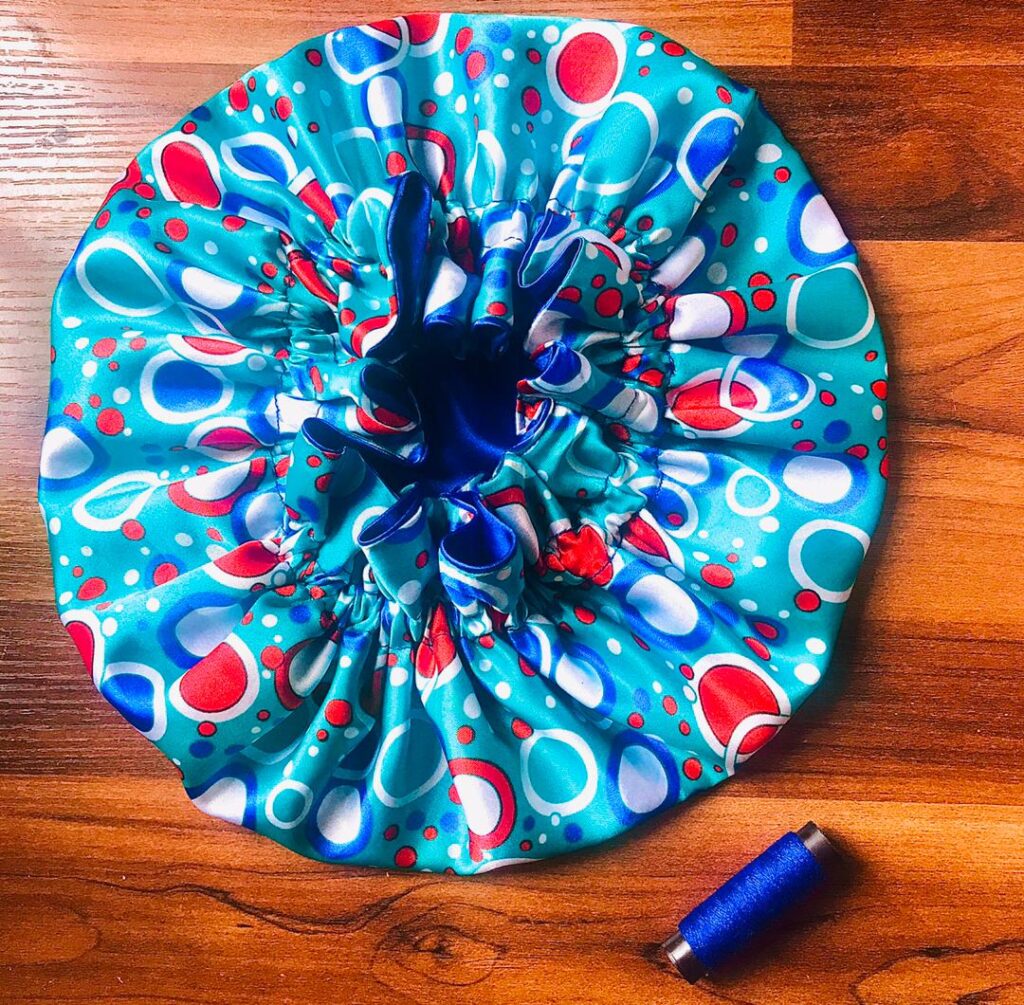Hey there!
Since you are on this page, then you know this vital truth:
How you take your hair to bed can have an impact on your hair—positively or negatively.
If you want the former and not the latter (which is my guess anyway), then you should pay attention to these protective hairstyles for sleeping.
Protective hairstyles do just what their name implies: Protect the hair!
You might wonder, though: Why is protective styling vital?
At the very least, it prevents your hair from looking all wild in the morning.
There’s more though, here are reasons why protective hairstyles for sleeping are essential.

Importance Of Protective Hairstyles For Sleeping
1. It Prevents Hair Damage
When you sleep without protecting your hair, you leave plenty of room for friction between your hair and your pillowcase—which is made of cotton in most cases.
This simple friction can cause damage to your hair tresses.
2. It Prevents Split Ends
Without these protective hairstyles for sleeping, you are likely to notice matting and tangling in your hair when you wake up.
The stress of detangling and combing is not the only issue associated with this.
It also puts you at risk of constant split ends.
With protective styling, however, you are safe.
3. Length Improvement
Do protective hairstyles help hair grow?
The answer is yes.
Since they keep your hair ends tucked away, it prevents damage and encourages length retention.
And generally, anything that prevents hair breakage and damage improves your hair’s length.
4. Serves As A Styling Tip
When you style your natural hair overnight, you save yourself a lot of stress the next day.
You avoid waking up with your hair looking all wild such that you don’t even understand where to start the day’s style.
Especially if you’ve added some moisturizer, you get to wake up with soft and supple hair.
And you know what they (dunno who they are) say, a great day begins with great hair!
Protective Hairstyles For Sleeping
When a friend used the term “bird’s nest” to describe how females’ hair looks early in the morning, ouch, I was hurt.
Sad because some females’ hair looks all wild when they wake.
So what do you say, sisters?
Let’s keep him shut!
Here’s a list of protective hairstyles for sleeping that will prevent your hair from looking like a “bird’s nest” when you wake up the next day.

a. The Dija Hairstyle
A Nigerian famous female singer and celebrity is well known for rocking this two-sectioned weave. Hence, the coined name ‘Dija Hairstyle.’
Well, it’s not just her.
One-time Miss World, Agbani Darego, also did a great job rocking it.
And because it looks so good on most females (yay me), it’s one of my favorites.
The Dija hairstyle is a perfect way to style your hair to bed.
It’s easy to make, comfortable to sleep in, great to rock your day with, and easy to loosen (Should you want to change your look for the day).
All you need to do is part your hair into two equal parts and plait it all back in a ‘V’ pattern as seen above.
And you are good to go!

b. Cornrows
Cornrows can be such a beaut.
Styling your hair in cornrows is another way to style your hair to bed.
Part your hair into sections—depending on how many cornrows you want to make—and weave it through.
If you choose to loosen your cornrows the following morning, you’ll have your hair smoothened and stretched.
c. Pineapple Method
The pineapple method is a fast, easy-to-make, and effective protective hairstyle for sleeping—one that is popular for ladies with naturally curly hair.
By easy to make, here’s what I mean:
Flip your hair such that it comes all front. Ensure that it sits on the very top of your head and keep it in that position using a hair tie or scrunchie.
If your hair’s length makes this unachievable, you can opt for what is called the multi-pineapple.
That is, try what is described above in two or three sections.
The less full each section is, the easier it is to form a pineapple.
Keep in mind that this style is better when hair is dry.
d. Braids/Twists
Another option to style your hair to bed is to braid it.
This option is very versatile as you can choose what size and which type of braid you want.
All you need to do is ensure your hair is well-detangled, part it as you desire, and start braiding.
Loose braids, French braids, twist-outs, Senegalese twisting—the list goes on and on.
You can try out different braids on different nights—all with your hair.
As a pro tip, apply oils and moisturizers to your hair before braiding so your hair can take in nutrients overnight.
Once you are done braiding, use a hair tie to loosely secure your braids together.
The good thing about braids is you can keep them in not just for the night but also for weeks by following these tips on making your braids last longer.

e. Loose up-do
As the name implies, the goal here is to pack your hair up loosely to bed.
To get the best out of this hairstyle, apply a leave-in conditioner to your hair before packing it up.
Secure the bun using a hair tie of your choice.
Ensure not to tie it too tight to prevent your hair from over-stretching.
Once you have your hair packed up, you either leave it that way or twist the bun (the ends of your hair) and tuck it loosely.
Whether your hair is natural or relaxed, this hairstyle is a go-to.
f. Low-bun Twist
To achieve this style, brush all of your hair to the back.
Then part it into two and twist each section.
This style is achievable with long, averagely full hair and perfect for those who love sleeping on their side and not back.
With this protective hairstyle for sleeping, you get to wake up with curly hair ends, especially if you styled it wet.
g. Top Knot
You can also protect your hair to bed with a top knot.
With a top knot, you get to wake up the following morning with your hair feeling fuller.
All you need to do is pack your hair to the top center and twist it.
You can keep the position using a claw clip as long as you use it such that your head doesn’t rest on the clip when you sleep.
I recommend this hairstyle to those with fine hair.

h. Satin/Silk Bonnet
Am I the only one who enjoys the feeling of tucking the hair in a bonnet after a long day of slaying with it?
I doubt it.
For me, it’s like telling my hair: ‘You’ve done well babies, now go rest for the day.’
If you’re like me in this aspect, here’s some good news:
Keeping the hair in a satin bonnet before sleeping is not just relieving but also good for your hair.
It’s one of the protective hairstyles for sleeping!
A satin or silk bonnet protects your hair from friction against your pillowcase, which in most cases is cotton.
Such friction would otherwise damage your tresses.
So when next you are on attachment braids, weaves, or some other hairstyles and you are not sure how to protect your hair to bed, grab a bonnet and cover your hair.
You’ll be good to go.
You don’t have an ultra-fine bonnet?
Click on this link and contact Eunnysavvyempire now!
Other alternatives are turban/scarf wrapping.
Frequently Asked Questions about Protective Hairstyles for Sleeping
Is it okay to sleep with my Hair Wet?
It is always best to let your hair dry naturally before going to bed.
You are at risk of waking up with dry and tangled hair if you sleep with your hair wet and open.
Fungal infections may also be lurking.
Is it okay to massage my Hair before Sleeping?
Absolutely!
A hair massage enhances the flow of blood to your scalp.
Healthy blood flow in the scalp contributes to healthy hair growth.
How Often Should I Oil my Hair to Bed?
Once or twice a week, depending on how dry your hair is.
If your hair is dry, you should use hair oils to seal in moisture twice a week.
Do this by applying hair oils and moisturizer to your hair from ends to roots and then giving it one of the protective hairstyles described above.
Does Braiding the Hair at Night protect it?
Yes.
Choosing braids as a protective hairstyle to bed will help your hair to lock in moisture that would otherwise be released in the air overnight.
Applying oils before braiding will keep your hair roots deeply hydrated.
Braiding the hair to bed is generally regarded as the best way to wear your hair to bed when loose.
Should I sleep with my hair up or down?
I know Barbie and Snowwhite look all pretty sleeping with their hair down.
I also know about that sleeping beauty thrill that comes with sleeping with your long hair brushed down, but this is not advisable.
Sleeping with your long hair down puts it at risk of knots and breakage.
In contrast, packing it up loosely or braiding it will keep your hair safe overnight.
Is a Rubber or Metal Hair Tie Good for my Hair Overnight?
No, dearie.
Metal and rubber ties put unnecessary pressure on your tresses, and that may lead to breakage.
A simple silk scrunchie is more advisable instead.
It prevents your hair from friction and would not cause ridges in your hairline after removal.
Click here to get one.
Pre – Sleep Hair Care Tips
While you get your protective hairstyles for sleeping done, here are some tips to keep in mind:
Detangling
Ensure that your hair is properly detangled before starting any protective hairstyle.
For ease, use a wide-toothed comb or brush to thoroughly brush your hair.
Thorough brush, of course, doesn’t mean that you violently brush your hair.
Do this gently, starting from the tips to the root.
This will prevent your hair from breakage and ensure that sebum (your hair’s natural oil) is distributed through all parts of your hair.
Use a Hair Treatment
Hair treatments work well when used overnight because they require long hours to get absorbed in the hair without any disturbance.
Apply a moisturizer or any other applicable hair treatment to your hair before styling, and let it do its work while you get your beauty sleep.
Get a good massage
A scalp/hair massage before sleep contributes to healthy hair growth as it enhances blood flow to your scalp.
So give yourself one before bed.
Or convince a family member or friend to give you one.
You will enjoy it, your hair will, and so will your sleep.
You can read more about the healing powers of a scalp massage here.
Use the ideal pillowcase
The regular cotton pillowcase encourages breakage because it tends to be rougher on hair.
For your hair care, sleep on a satin or silk pillowcase.
A satin or silk pillowcase is smooth on hair. Hence it prevents friction that would otherwise damage your hair.
If you aren’t going to switch to a satin or silk pillowcase anytime soon, you should at the very least use a satin or silk bonnet.
That way, you can toss as much as possible while sleeping without fearing for your hair.
Air-dry before sleeping
Lastly, if you wash your hair at night, ensure that you do not sleep with it in its wet state.
This is because the hair is fragile when wet, and any little tossing during sleep could cause breakage (and who doesn’t toss at least a bit while sleeping)
To protect your hair, air dry it before going to bed.
You can also arrange to wash your hair during the day rather than at night.
Conclusion
Before reading this, did the idea of styling your hair to bed seem strange to you?
Well, now you know better.
While you get your beauty sleep at the end of a long day, ensure your hair beauty is also staying intact.
Do this by trying out one of the protective hairstyles for sleeping discussed above.
You’ll be glad you did!